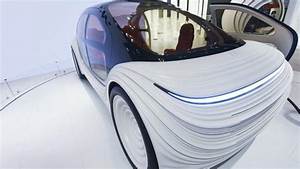A car that has been designed to strip the air of pollution because it drives along has been shown off at the Goodwood Festival of Speed. Created by British designer Thomas Heatherwick, it’s hoped the Airo will go into production in China in 2023, with plans to form 1,000,000 of them. The radical design is meant to handle not only the pollution issue but also help solve the “space crisis”. Critics aren’t convinced it can ever be quite an ideal car. Despite designing London’s redo of the long-lasting Routemaster bus, Mr Heatherwick is healthier known for architectural projects like Google’s headquarters in California and London. He told the BBC that while he had never designed a car before, he was intrigued by the brief. When I grew up design values were manifested through cars, whether or not it’s the [Ford] Sierra within the 1980s, the [Fiat]Panda, some major ideas were emerging through cars. “When we were approached by IM Motors in China, we said that we weren’t car designers and that they said ‘that is why we wish you.” The car – which was first unveiled at the Shanghai car show in April – encompasses a large glass roof, and also the interior is intended to seem sort of a room, with adjustable chairs which will become beds, and a central table intended for meetings or meals. The handwheel is hidden within the dashboard and also the exterior is textured, with a series of ripples or ridges. “Car manufacturers are falling over themselves to form electric cars, but a replacement auto shouldn’t just be another one with a unique look,” said Mr Heatherwick. As well as desirous to reflect the flow of air over the car within the ridged exterior, the front grill is going to be fitted with an air cleaner which is able to “collect a ball worth of stuff per year”, he told the BBC. “That won’t sound plenty but think about a ball in your lungs, that’s contributing to cleaning the air, and with 1,000,000 vehicles in China alone, that adds up.” Incorporating this technology is “the next stage of development” he said. it’s planned for it to own both autonomous and driver-controlled modes. Peter Wells, professor of business and sustainability at the Cardiff Business School’s centre for automotive industry research, told the BBC: “I cannot see how this car can make any significant contribution to resolving the numerous problems related to car ownership and use. “The contribution of this car to cleaning the air in our polluted urban centres would be so small on be impossible to live. “This is straight away evident if you compare the quantity of air likely to experience the filtration system of the car with the amount of air in total.” The second big idea behind the car’s design is as an alternate space for owners to use. “Covid has raised the space crisis. Many people reside in flats and houses and want extra space, an office or a study,” said Mr Heatherwick. With one billion cars within the world which are used for roughly only 10% of the time, there’s scope for them to become “valuable real-estate”, he said. He was inspired by first-class airline seats, which are used “to sleep, eat, entertain and work”. “The car becomes a communal space for the time when it’s not driving.” The vehicle is priced at around £40,000 – something Mr Heatherwick described as “not crazy luxury”. Prof Wells is sceptical that it’ll be designed in its current form. “The car industry features a long history of making excitement around concept cars but the transition to production – if it happens in the least – usually means the exciting features are replaced by something more mundane, ready to be manufactured, practical in use and cost-effective.” “This isn’t a fantasy,” said Mr Heatherwick. “The whole idea was for it to not be an ideal car, which is why we are working with a manufacturer, and that we focused everything on ideas that may happen.” But he did admit the look “may simplify somewhat” when it goes into production.

